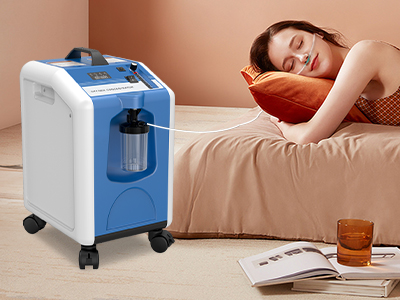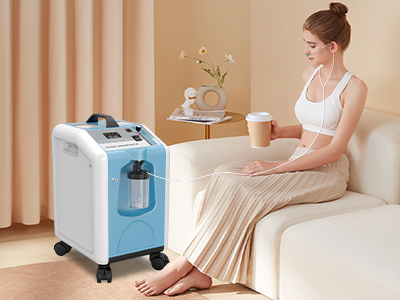04 Aug 2023
Oxygen concentrators play a vital role in providing respiratory support to individuals with breathing difficulties.
Tip 1: Proper Placement and Ventilation
The first step to optimize the functionality of an oxygen concentrator is to ensure proper placement. Position the concentrator in a well-ventilated area with enough space around it to allow for adequate air circulation. This helps prevent overheating and ensures the concentrator works at its best capacity.
Tip 2: Regular Maintenance and Cleaning
Routine maintenance is crucial to keep the oxygen concentrator running efficiently. Regularly inspect and clean the device as per the manufacturer's guidelines. Cleaning filters, air intakes, and other components prevents dust and debris buildup, ensuring the concentrator delivers clean and pure oxygen.

Tip 3: Understanding Oxygen Flow and Settings
Familiarize yourself with the oxygen flow rates and settings on the concentrator. The prescribed flow rate should be set according to the patient's needs. Understanding the settings ensures the right amount of oxygen is delivered, optimizing therapeutic benefits.
Tip 4: Power Backup and Emergency Preparedness
To ensure continuous oxygen supply, consider having a power backup option like a battery or generator. During power outages or emergencies, having a backup plan in place can be lifesaving for patients relying on oxygen concentrators.

Tip 5: Traveling with Oxygen Concentrators
For individuals who need oxygen therapy on the go, portable oxygen concentrators are a game-changer. Before traveling, check airline regulations and guidelines for using oxygen on flights. Properly pack and secure the concentrator, and keep all necessary documentation handy while traveling.
Tip 6: Mask and Cannula Selection
Choosing the right oxygen delivery interface is essential for patient comfort and compliance. Work with healthcare professionals to find the most suitable mask or cannula that fits well and ensures efficient oxygen delivery.
Tip 7: Monitoring Oxygen Saturation Levels
Regularly monitor oxygen saturation levels using a pulse oximeter. This non-invasive device measures the amount of oxygen in the blood and helps determine if the prescribed flow rate is sufficient. Monitoring oxygen levels provides valuable insights into the effectiveness of oxygen therapy.
Tip 8: Educating Family Members and Caregivers
Educate family members and caregivers about oxygen therapy and the proper use of the concentrator. Ensuring they understand the equipment and its maintenance allows for better support and care for the patient.
Conclusion
By implementing these top oxygen concentrator tips, patients can optimize their oxygen therapy experience and lead a better quality of life. Proper placement, regular maintenance, understanding settings, and being prepared for emergencies are key to getting the most out of oxygen concentrators. With the right knowledge and support, patients and caregivers can ensure effective and efficient oxygen delivery for respiratory well-being.
Keywords: oxygen concentrator
Originally published 04 Aug 2023, updated 04 Aug 2023.